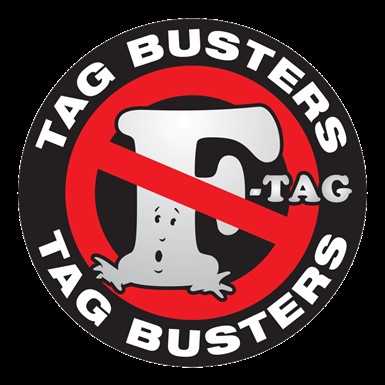By Tamala Sammons, M.A. CCC-SLP, Senior Therapy Resource
F-Tag 686: Skin Integrity; Pressure Ulcers/Injuries
Surveyors will assess how a facility is doing based on the comprehensive assessment of a resident, and ensure that:
- A resident receives care, consistent with professional standards of practice, to prevent pressure ulcers and does not develop pressure ulcers unless the individual’s clinical condition demonstrates that they were unavoidable; and
- A resident with pressure ulcers receives necessary treatment and services, consistent with professional standards of practice, to promote healing, prevent infection and prevent new ulcers from developing.
How can Therapy help be a partner to ensure the facility has a strong skin system? Start by asking a few questions:
● Is skin integrity and risk for pressure ulcers assessed on every Therapy evaluation? Should it be?
● Do therapy assessments include other risk assessments, i.e., tissue tolerance testing? Pain? Nutrition/Hydration? Incontinence?
● When OT is working on showers with patients, in addition to focusing on ADLs, do they assess the patients’ skin?
● How often does PT remove a patient’s shoes/socks to assess a patient’s feet?
There are a wide variety of clinical areas that Therapy can assess and treat to ensure residents have good skin integrity, reduce risk for pressure ulcers/injury, and actively treat wounds.
Pressure Points and Tissue Tolerance
An at-risk resident who sits too long in one position or is known to slouch in a chair has an increased risk for pressure ulcers/injuries. Elbow pressure injury is often related to arm rests or lap boards. Friction and shearing are also important factors in tissue ischemia, necrosis and PU/PI formation. PU/PIs on the sacrum and heels are most common.
● How often does Therapy assess for pressure points and tissue tolerance?
● Does Therapy assist with the completion of the Braden Scale? Your clinical partners would love the assist!
Positioning and Support Surfaces
Once the IDT identifies who is at risk, how do they determine the needed support surfaces, proper positioning and/or repositioning frequency? Do they take into consideration the individual’s level of activity and mobility, general medical condition, overall treatment objectives, skin condition, and comfort? Appropriate support surfaces or devices should be chosen by matching a device’s potential therapeutic benefit with the resident’s specific situation.
● How does Therapy engage in assessing the appropriate positioning and support surfaces?
● How often does therapy assess residents to ensure the recommended positioning and support surfaces are in place, still meet the needs for each resident, and provide reviews/updates of the resident care plan?
Active Wound Care
PT intervention for active wound care is appropriate when any of these exist: Necrotic material is present in the wound bed; the wound is a stage 3 or 4 pressure injury; the rehab potential is good to meet stated goals; and/or the wound has an impaired healing process.
● Do we have a physical therapist on staff who treats wounds?
● Are we up to date on all the various wound care interventions, such as: scalpel debridement; closed pulse irrigation; ultrasound MIST; and/or other modalities?
Incontinence
Both urine and feces contain substances that may irritate the epidermis and may make the skin more susceptible to breakdown and moisture-related skin amage.
● What is Therapy’s involvement with incontinence intervention?
Nutrition and Hydration
Adequate nutrition and hydration are essential for overall functioning. It is critical that each resident at risk for hydration deficit or imbalance, including the resident who has or is at risk of developing a PU/PI, be identified and assessed to determine appropriate interventions.
● Is SLP involved as part of Skin IDT?
● Is the Think Thin program in place?
Contractures
A resident with severe flexion contractures also may require special attention to effectively reduce pressure on bony prominences or prevent breakdown from
skin-to-skin contact. Some products serve mainly to provide comfort and reduce friction and shearing forces, e.g., sheepskin, heel and elbow protectors.
● What is Therapy’s role with contractures? How often is skin/skin hygiene assessed?
● Does Therapy have an active hand/skin hygiene program?
● How often does Therapy assess splints’ effectiveness for not only the contracture but also skin integrity?
Pain
The assessment and treatment of a resident’s pain are integral components of PU/PI prevention and management. Pain that interferes with movement and/or affects mood may contribute to immobility and contribute to the potential for developing or for delayed healing or non-healing of an already existing PU/PI.
● What therapy assessments are completed to determine any pain levels?
● Are modalities used for pain management?
● Is level of pain discussed during skin IDT meetings?
Training, Education and IDT Collaboration Resources
● Refer to chapter VIII page 82 of the RNA manual for information that can be used for training CNAs and/or RNAs on skin and positioning. https://portal.ensignservices.net/Departments/Clinical-Resource-Tools/Manuals/manuals Scroll down or type in the search Restorative Nursing Program Manual.
● Refer to the EPIC section of the portal https://portal.ensignservices.net/EPIC/skin for education, information, and other resources for an IDT approach for skin.
● Refer to the Pressure Ulcer/Injury Critical Element Pathway. This can also be found on the portal. https://portal.ensignservices.net/Departments/Clinical-Resource-Tools/CMS-Requirements-of-Participation/CMS-TOOLS/NEW-SURVEY-PROCESS/critical-element-pathways
● Refer to a variety of supportive POSTettes for additional information: Wound Care, Contractures, UI, UTI, Pain, Nutrition/Hydration.

